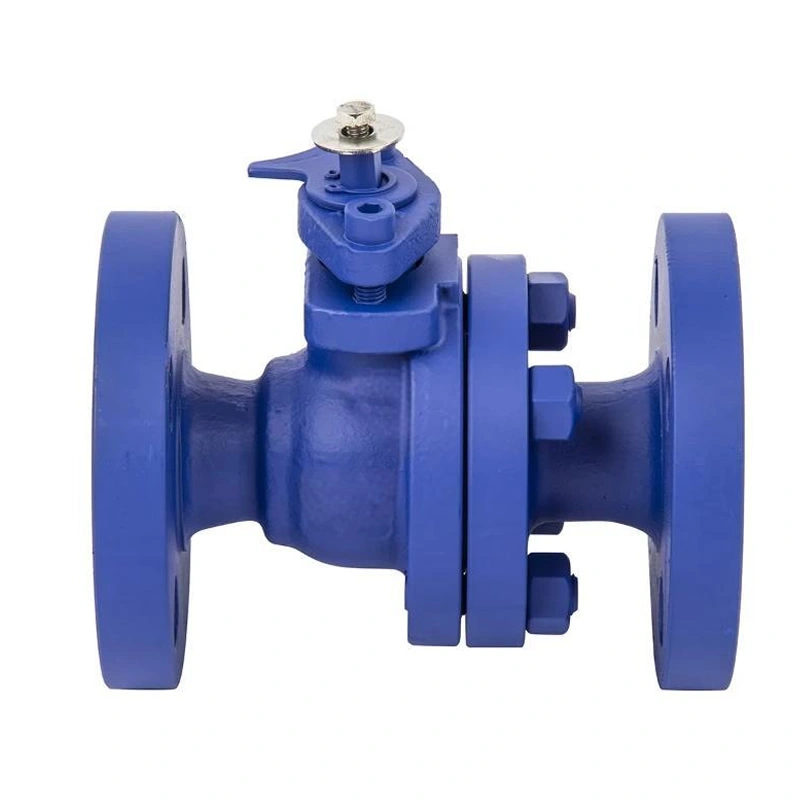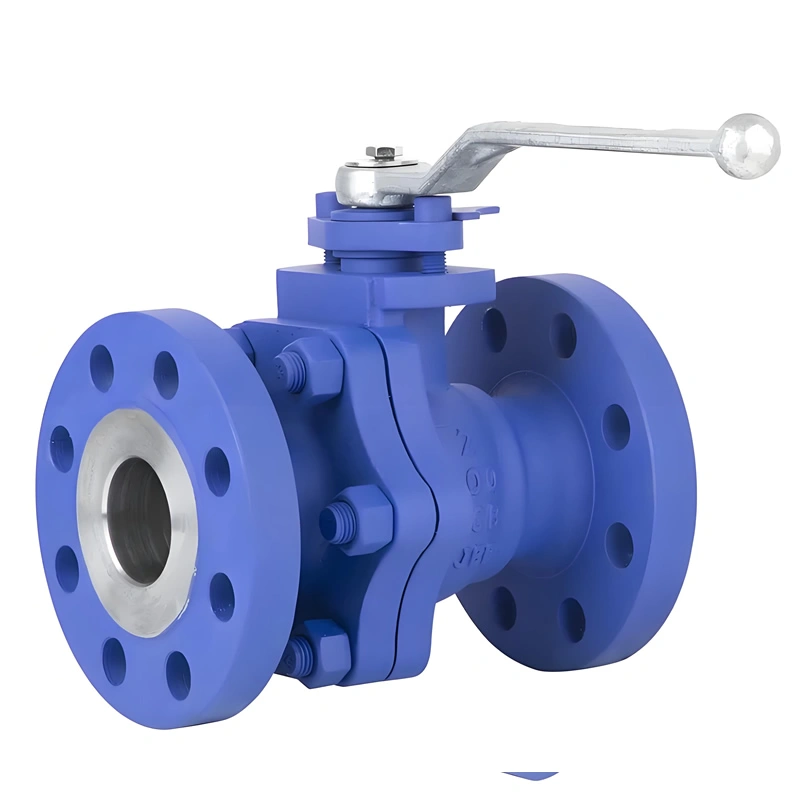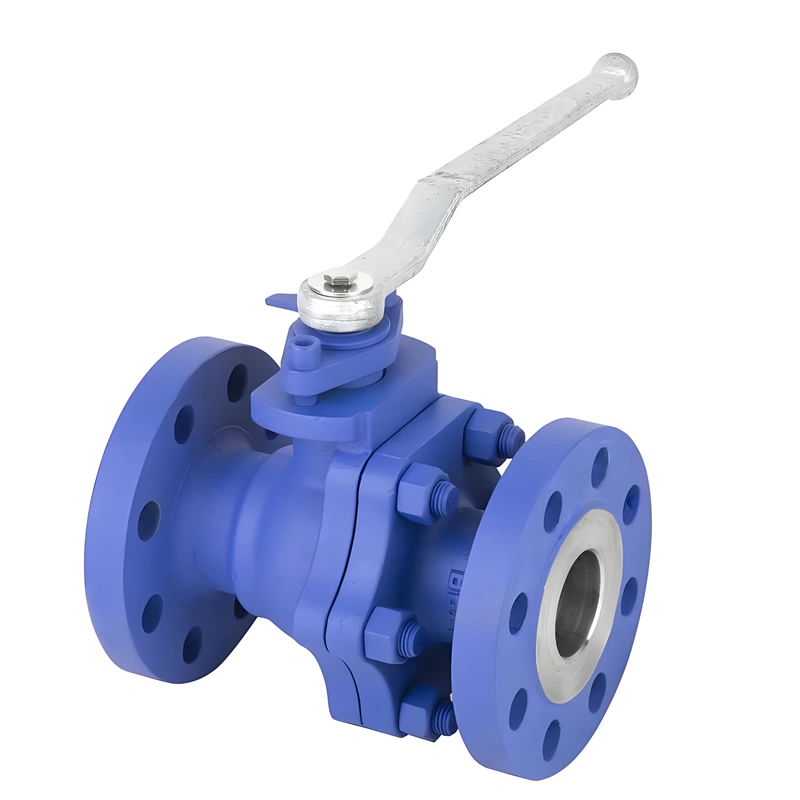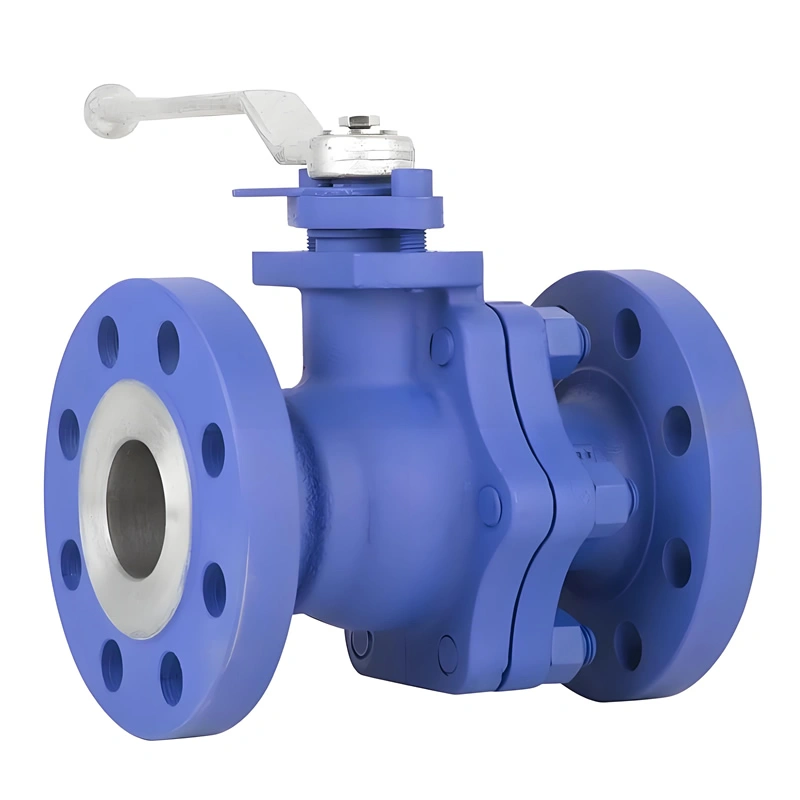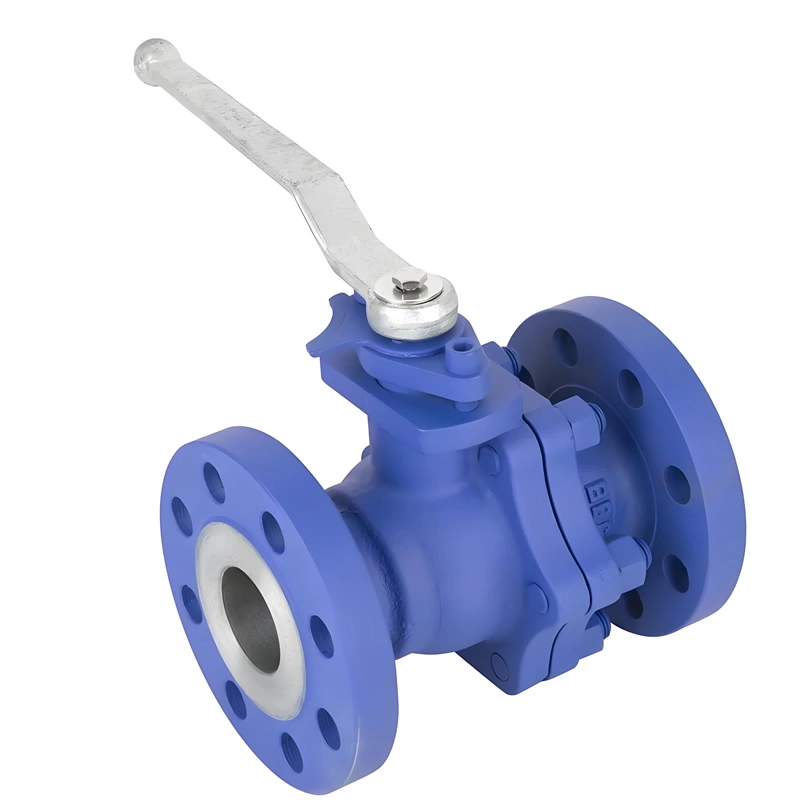- 1/2″-24″
- Class150-class1500
- Steam, water, oil,etc
- Carbon Steel A216 WCB/A105 (GS-C25/ GP240GH/ 1.0619/ P285NH),, WCC, low Carbon Steel LCB, LCC, Alloy St A217 WC6, WC9, C5, C12, Stainless steel A351 CF8, CF8M, CF3, CF3M, CF8C, Duplex steel A890 GR.4A
- Carbon steel A105, A105+ENP, Stainless steel SS201,SS304,SS316, SS316L
- Lockable Handle Lever, worm, electric, pneumatic
- API 6D, ASME B16.34
- ASME B16.10,API 6D
- ASME B 16.5
- ASME B16.25
Specification
DN15~DN600 Class 150~900 PTFE/PFA/FEP Lined Stainless Steel Floating Ball Valve
I. Product Overview
Newway PTFE/PFA/FEP lined floating ball valve is a high-performance flow control solution engineered for corrosive industrial systems. Built with cast steel, stainless steel, or alloy steel bodies and lined with fluoropolymers (PTFE/PFA/FEP)—materials renowned for chemical inertness—it combines API 608 compliance with versatile actuation (manual, pneumatic, electric) to ensure reliable shut-off and regulation of aggressive media. Designed to handle Class 150~900 pressure and ordinary temperatures, it balances corrosion resistance, sealing precision, and operational flexibility. Ideal for chemical processing, petroleum, pharmaceuticals, and water treatment, it addresses the challenges of handling acids, alkalis, solvents, and other corrosive fluids where standard metal valves fail.
II. Key Attribute Parameters
Size Range: DN15~DN600 (1/2″~24″), covering small to large-diameter pipelines for diverse corrosive media applications.
Pressure Range: Class 150~900 (2.0MPa~15.0MPa), adapting to low to high pressure systems such as chemical reactors and high-pressure solvent transfer lines.
Temperature Range: -20℃~200℃ (depending on lining material), with PTFE suitable for general corrosives, PFA for higher temperatures, and FEP for enhanced flexibility.
Material Configuration:
Body: Cast steel (WCB), stainless steel (CF8/CF8M), or alloy steel (WC6)—providing structural strength while the lining isolates corrosive media.
Lining: PTFE/PFA/FEP, forming a complete barrier between media and metal body to resist acids, alkalis, and organic solvents.
Ball: Stainless steel (304/316) with fluoropolymer coating, ensuring smooth rotation and compatibility with lined seats.
Stem: Stainless steel (316) with anti-blowout design, preventing ejection under pressure and resisting corrosion.
Seat: Lined with PTFE/PFA, achieving tight shut-off and low friction for easy operation.
Connection Type: Flange (per ASME B16.5) or Welding (per ASME B16.25), enabling secure integration with pipeline systems.
Actuation: Manual (lever/worm), pneumatic, or electric—manual for simple on-off, automated options for remote or precise control.
Design Standards: API 608, API 6D, ASME B16.34, ensuring compliance with global industrial and safety specifications.
Product Overview
III. Features Description
Fluoropolymer Lining Corrosion Resistance: The PTFE/PFA/FEP lining forms a seamless barrier (thickness 2~3mm) that isolates the metal body from corrosive media. Chemically inert to 95% of industrial chemicals—including sulfuric acid, sodium hydroxide, and acetone—it eliminates metal corrosion, a common failure point in unlined valves.
Floating Ball Design: The ball “floats” against the seat under media pressure, ensuring uniform sealing contact across the entire seat surface. This design adapts to minor pressure fluctuations, achieving ANSI/FCI Class VI leakage (near-zero) even in high-pressure (Class 900) applications.
Anti-Blowout Stem: A one-piece stem with a retention shoulder prevents ejection under pressure, enhanced by PTFE packing that maintains sealing integrity without media contamination. This meets API safety standards for hazardous fluid handling.
Versatile Actuation: Manual lever/worm operation for simple systems; pneumatic actuators for fast on-off in automated lines; electric actuators for precise throttling (0~90° rotation) in pharmaceutical or chemical dosing systems. All options integrate via ISO 5211 mounting pads.
Fire-Safe Compliance: Optional fire-safe design (per API 607/6FA) ensures the valve maintains sealing after a fire, with metal backup seats preventing media release—a critical feature for petroleum and chemical plants.
IV. Manufacturing Processes
Lining Preparation: Fluoropolymer resins (PTFE/PFA/FEP) are molded into liners matching the valve body’s internal shape. The lining is sintered (380℃~400℃ for PTFE) to achieve density ≥2.1g/cm³, ensuring no pores that could trap corrosive media.
Body & Ball Machining: The metal body is sandblasted to roughen the surface, improving lining adhesion. The ball is precision-ground to Ra ≤0.8μm, then coated with fluoropolymer via electrostatic spraying for uniform thickness (0.1~0.2mm).
Lining Integration: The sintered liner is inserted into the body and bonded using high-temperature adhesive, with pressure applied (5~10MPa) to ensure full contact. This prevents liner detachment under thermal expansion or pressure cycles.
Assembly & Testing:
Hydrostatic Test: Body tested at 1.5×rated pressure (water) for 30 minutes; seat tested at 1.1×rated pressure (air) to verify no leakage.
Corrosion Test: Lined components immersed in 30% sulfuric acid for 72 hours—no lining damage or metal corrosion allowed.
Operation Test: 1,000+ open/close cycles to confirm smooth ball rotation and consistent sealing, with special focus on low friction in manual operation.

